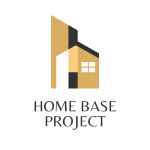Jump to:
Every homeowner dreads finding mold in their house. Some types of mold, in some situations, can be both toxic for human health and expensive to remove. So what steps should you take as a homeowner if you do discover signs of mold in your house? And what’s the process for remediating the problem?
The Basics of Mold
Mold is a type of fungus, and there are many different species of mold, each with fundamentally different characteristics. There are probably hundreds of types of mold in and around your house already, as many types of mold are completely invisible and harmless to humans.
However, some types of mold are much more noticeable. They’re easily visible, and they can produce spores and other materials that may be harmful to human health. Prolonged exposure to mold can lead to respiratory symptoms, and if you’re allergic to the mold in question, you may demonstrate a wide range of symptoms, some of which can be very serious.
It’s impossible to distinguish between toxic or non toxic mold without proper testing. Eliminating mold from your property can also be very challenging. Once mold colonizes, only applying specific cleaning protocols and installing special equipment can remove it.
If you have a mold problem, your best course of action is hiring a mold remediation specialist.
Types of Mold
We use the generic term “mold” to describe more than 100,000 species of fungus. Many of these species are completely innocuous, but a few types are dangerous and harmful even in small amounts and need immediate remediation.
Some of the most common types of mold found in homes are aspergillus, cladosporium, and stachybotrys atra. Aspergillus is allergenic, and can be found in most HVAC systems (and on food). Cladosporium is what you’ll find on the back of your toilet (and on painted surfaces); it’s a black and green mold that looks like pepper. Stachybotrys atra is “black mold,” and is instantly recognizable for its black/dark green color and its slimy texture.
Any type of mold may produce an allergic response or negative health symptoms in an individual. Anytime you believe mold may be causing health problems, it is important to address the situation right away. Ideally, you’ll be able to remediate the mold problem before it produces any recognizable symptoms.
What Should You Do If You Find Mold in Your House?
So what should you do if you find mold in your house?
· Remain calm. Try not to panic. People sometimes believe that black mold is as deadly as a source of major radiation, but in reality, many molds are not inherently dangerous, most molds that are dangerous affect your health gradually, and most mold problems can be remediated with the right approach.
· Pay attention to your symptoms. In some cases, mold may not have any noticeable effects on your health. Still, you should pay close attention to any physical and mental symptoms that develop from your exposure to mold. If you notice any significant health symptoms arising from this environment, seek a new environment as quickly as possible. It may be best to stay in a hotel or with a relative while the mold problem is addressed.
· Attempt to clean the mold. You may attempt to clean the mold and eliminate it yourself. If you do this, be sure to wear proper protective equipment, including goggles, gloves, and respiratory protection. A stiff brush with some diluted bleach may be enough to clean some areas of growth (just make sure not to mix cleaning products).
· Call a professional. If your first attempt is unsuccessful, or if you continue to struggle with mold, your best option is to call a professional. Mold specialists will be able to tell you about this particular species of mold, and they’ll come up with a plan to address it.
Preventing Mold Growth
The best way to deal with a potential mold problem is to prevent it from occurring.
· Reduce humidity levels. Mold thrives in humid environments, which is why you often find it in bathrooms, basements, and other damp places. One of the best ways to thwart the growth of mold is to reduce humidity levels with a dehumidifier.
· Improve air flow. You can also reduce ambient humidity levels by improving air flow throughout your house.
· Fix leaks. Repair any plumbing leaks to stop sources of moisture and humidity from influencing mold growth.
· Clean with products that kill mold. Finally, clean all susceptible surfaces with products designed to kill mold.
Fortunately, most mold problems are entirely preventable. But if you notice any mold or mildew in your home, it’s important to take action. While many species of mold are not harmful, it’s better to address and eliminate a problem than it is to wait and address the ramifications of that problem.

